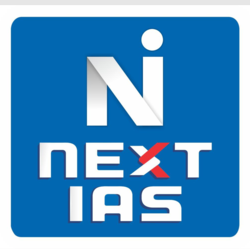
In Context
- The recent rail accident in Balasore in Odisha, involving the collision of three trains, is a tragic reminder of the challenges that India’s Rail services are facing.
The Balasore train accident
- The derailment of 10 to 12 coaches of the Shalimar-Chennai Coromandel Express caused them to fall onto the opposite track. Subsequently, the Bengaluru-Howrah Superfast Express collided with the derailed coaches, leading to the derailment of three to four of its own coaches.
- Adding to the tragedy, a goods train was also involved in the crash.
- At least 275 people were killed and over 900 were injured.
About India’s Rail services
- The Indian Railways carries nearly 15 million passengers every day now compared to the peak of 23 million a day the year before the COVID-19 pandemic.
- India has an ambitious plan to improve its rail infrastructure, and in the year 2023-24, ₹2.4-lakh crore has been allocated for capital expenditure.
- In 2021, the Prime Minister announced that 75 new semi-high speed trains labelled Vande Bharat would be started over 75 weeks, and several have been started already.
- There has been attention on passenger amenities also, but nothing can be more important than safety.
- Though such deadly train accidents are usually not too frequent, they do recur occasionally.
Challenges for Indian Railways
- CAG report on derailment and other safety issues:
- The CAG report on derailment and other safety issues on Indian Railways had pointed out the huge flaws in the system in 2020.
- The report audited the derailments in the four years up to 2020–21, noted that the share of money spent on the priority-one safety projects under the Rashtriya Rail Sanraksha Kosh fell during this period.
- Further, the allocations for track renewals declined from `9,608 crore to `7,416 crore.
- To make matters worse, even the allocated fund was not fully used.
- Similarly, the length of the tracks actually renewed always fell short of targets.
- This is in spite of the fact that a quarter of the 1,127 train derailments was linked to inadequate track renewals.
- Low priority for safety:
- Of the total capital expenditure of Rs 1,39,245 crore in 2020-21, the amount spent on ‘Track Renewal’ was 8.6 percent and on ‘Signaling and Telecommunication’ was 1.4 percent, showing the low priority to matters that are crucial for safety.
- Low on funds:
- Depreciation Reserve Fund:
- The India Railway has a Depreciation Reserve Fund for replacement and renewal of over-aged assets. The Fund had a meagre balance of Rs 585 crore on March 31, 2021.
- CAG observed “the amount is insignificant compared to the actual amount required.”
- Railway Safety Fund:
- In April 2001, a Railway Safety Fund was created. Its scope was enlarged to include Safety Works. The source of funds was through transfer of the cess on diesel. At end of 2020-21, the Fund had a balance of only Rs 512 crore.
- Depreciation Reserve Fund:
- 2021 CAG Report:
- CAG submitted another report for the year ended March 2021.
- It observed, “Proper maintenance of the railway track is a pre-requisite for the train operation without accidents.”
- Non-deployment of TRCs:
- Track Recording Cars (TRC) are used for inspection.
- The shortfall in TRC inspections ranged from 30 percent in one zonal railway to 100 percent in four zonal railways.
- The CAG concluded that “the non-deployment of TRCs led to non-checking of track parameters having implications on overall safety of train operations including derailments.”
- The main causes were:
- Poor planning,
- Idle track machines,
- Vacancies in the work force and
- Lack of training of Permanent Way staff.
- Track Recording Cars (TRC) are used for inspection.
- Ill-prioritization:
- Priority for new trains over track maintenance and renewal;
- Vande Bharat and Tejas trains over capital expenditure on signaling and telecommunication;
- vanity projects (Bullet Train) over filling of the humongous number of vacancies in sanctioned posts; and speed over safety.
- To make matters worse, the rollout of the much-acclaimed Kavach, an automatic train protection system designed to ensure zero accidents, was not given the priority it deserved.
- Technical constraints:
- In the Signal and Telecommunication department, the major constraint was ‘system/technological deficiencies’.
- Most serious accidents occurred due to collisions and Signal Passing At Danger (SPAD).
- SPAD was caused by violation of Rules, working beyond stipulated duty hours, defective vigilance control devices and absence of route learning of loco crew.
Recent reforms proposed by Indian Railways
- Allowing private entry, including in running of private trains;
- Changing the composition of the Railway Board;
- Decentralised decision-making to zones/divisions and even further below;
- Separating the core functions of running trains from non-core functions like schools and medical services;
- Setting up a regulator;
- Unifying various railway services; Transit to commercial accounting and
- Uniting the Railway Budget with the Union Budget.
Way ahead
- Accidents per million train kilometre have fallen over the last decade, but poor maintenance of tracks and the rolling stock and overstretched staff are problems that the Railways can no longer camouflage with glitzy facades.
- The accident in Balasore should prompt India’s railways development plans onto the right track.
- Safety measures including anti-collision systems are expanding, but evidently not at an adequate pace.
- More important will be the corrective measures by the Railways at the operational and planning levels.
- It will have to find more resources to modernise and rationalise its priorities.
|
Daily Mains Question
[Q] What are the challenges faced by India’s rail services? Analyze the corrective safety measures that can be undertaken post Balasore train accident. |
Previous article
The Need for De-globalization
Next article
AI’s Potential and Threat Call